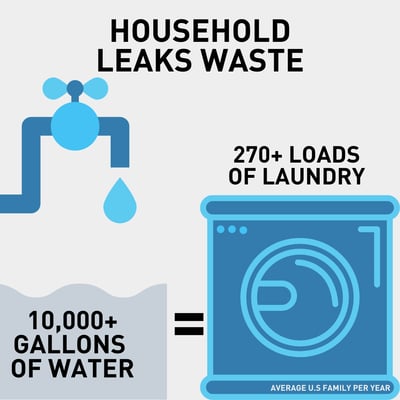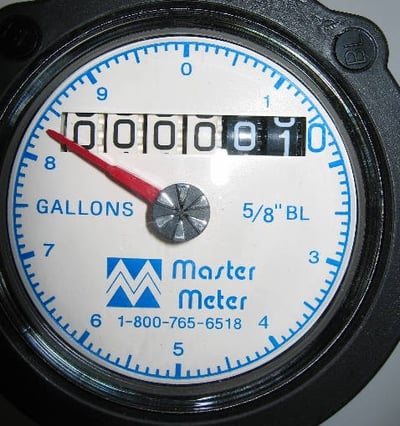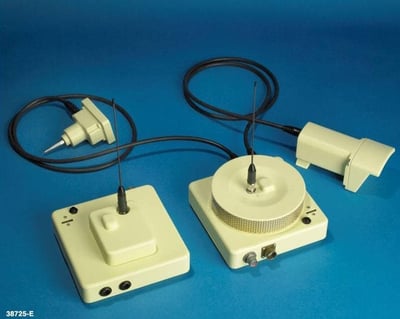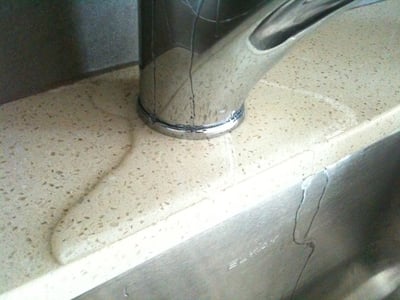Michael Bespina
Water leaks are both a nuisance and a disaster waiting to happen in people’s homes. What starts out as a small leak can grow into a large one that doesn’t only waste money in water bills, but also negatively affect the structural integrity of the house.
What starts out as a small leak can later become dangerous in many ways. Damp spots can grow fungus and black mold that can be hazardous to health. Contaminants can enter leaking pipes and render the water unsafe. Structural damage caused by long-ignored leaks cost a lot of money to fix and can drive property value down.
In statistics, nearly around 1 trillion gallons of water are wasted each year in U.S households. According to the United States Environmental Protection Agency (EPA.gov), an average household loses 10,000 gallons of water each year, which is equivalent to 270 loads of laundry. On average, depending on the rate you pay for water, a water leak could cost an additional $70 per month on your water bill!

In a lot of cases, if you see water dripping from walls, discoloration on floors, black mold, or any other visible signs of a water leak, it had already been there for a long while at that point. Early detection of water leak could not only save your home from damages but helps you save you tons of money in the long run.
Unrepaired water leaks, in general, could be costing you an extra 10% on your water bills so put your detective hat and chase down leaks as early as possible.
So if you need to know what you’re supposed to do, here are five great tips for detecting water leaks in your home.
1. Check the Water Meter
Turn off all water outlets in your house, including appliances and other fixtures. Check your water meter to see if there's any change. If everything is indeed off and there are no leaks, there should be no change. But if there's a fast-moving leak, you'll see a change in as soon as a few seconds.

If there are no fast-moving leaks, then wait for two hours or so. A small change within that time may indicate a slow-moving leak. Finding the leak itself is a different problem, but at least you'll know that there's indeed a leak in your home.
This is the most reliable common sense leak detection method available to every homeowner. It’s good practice to do this every six months to a year as a precaution against possible leaks.
2. Use Your Ears or a Geophone
While you have the water turned off, also turn off anything that makes a sound. It'll also help if everyone in the house stays quiet for the time being. Check every room and listen for potential leaks or dripping. Something as simple as listening can help you detect hidden leaks.
If you're able to obtain or borrow one, you can also use a geophone. It's an instrument similar to a stethoscope that's designed to pick up and amplify sound through the ground. A geophone may help with hearing drips from small leaks, but larger leaks may not make as obvious of a sound.
3. Stains on Walls, Floor, and Ceiling
One of the most obvious visual signs of a water leak is a telltale water stain on a wall, ceiling, or floor. Look for any sort of discoloration, like a spot with slightly darker edges. That may be caused by a water leak.
If a stain happens to be hard to see due to the material, another way of leak detection is to feel for any soft wet spots. Large wet spots may indicate serious leaks that may actually cause structural weakness in that part of the house due to water damage.
4. Food Coloring in Your Toilet
Leaking toilets account for a large percentage of wasted water. Usually, you'll see ripples on the water if it's a big enough leak. But if it's only a trickle, it won't be as obvious. You may notice it not flushing as well as it usually does, which means the tank isn’t filling up like it should.
Fortunately, there's a leak detection method for toilets that uses either dye or food coloring. Add a drop of dye or food coloring to the water in the tank. Without touching the flushing mechanism, wait for a few minutes and see if the water in the bowl starts taking color. If it does, then the flapper or gaskets may be loose or leaky.
5. Ground Penetrating Radar
This may be far out for a lot of people, but having access to a ground penetrating radar (GPR) can make for effective leak detection. It's especially effective if the leak is coming from the outside.

The device sends waves that move through the ground and solid objects, which then bounce back and get picked up. The strength of the wave and the time it takes for it to come back can indicate what type of material it has come across.
Conclusion
These are some of the best tips for leak detection in your own home. If you’re still unable to detect leaks, even if you’re absolutely sure that there must be something wrong, then you may have to call upon professional help to deal with the problem.
The longer a leak is allowed to persist, the more damage it can cause. Leak detection is crucial to maintaining the integrity of one’s home, especially since water leaks can be damaging in the long run.
.png?width=375&height=150&name=MicrosoftTeams-image%20(63).png)

